by Lance Hill | Apr 30, 2012 | Mirliton
I just posted to our FAQ page a comprehensive article on powdery mildew in Mirlitons. I tried to get it to fit on the blog but apparently blogs are for concise thinkers–that rules me out. Visit the FAQ page and Garden Blog for new useful information.
Lance Hill, Mirliton.Org
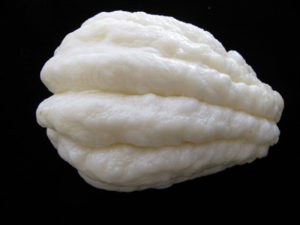
Ishreal Thibodeaux Variety Mirliton. This is the only pure-white mirliton that we know of in the South.
by Lance Hill | Apr 21, 2012 | Mirliton

Mirlitons (Sechium edule) in the United States south have two main fruiting seasons that begin after the spring and fall equinox, which generally means flowering begins in May for several weeks and again in October until December. The plant initiates flowering in response to leaf signals when leaves detect equal periods of light and darkness (photoperiodism). This stimulus is combined with temperature changes (thermoperiodism) in the fall: a cold snap after the equinox can help stimulate flowering. Spring crops are normally much smaller than the fall crop.
This early crop has created an opportunity to use the winter/spring fruit for seed. But these cool-weather mirlitons can be a little cranky if panted in hot weather.
Spring fruit can be used as seed but must be planted using special methods. The goal is to get the sprouts into the ground as soon as possible so they can develop a root structure sufficient to meet the water needs of the top growth when temperatures reach 90 °F as early as May. Unlike containerized plants or seeds that were planted the previous fall, these sprouts begin the summer with no root structure.
Spring fruit should be allowed to mature for at least three weeks on the vine and meet the “thumbnail test”: press your thumbnail into the skin and if the fruit flesh is soft and the nail leaves a dent, then the fruit is not ready to pick. Also if you are familiar with the heirloom variety that you are growing, you will know the average size of a mature fruit. The fruit must be mature to be able to germinate and sprout.
Hot Weather Planting of Sprouts:
During normal growing cycles, the fruit may not be ready to pick until late May and won’t sprout until June or later. Temperatures over 90°F. can suppress shoot and root development and dehydrate the seed fruit that is exposed to the sun. I’ve done that in the past–planted a sprout in June and watched it sit there and do nothing. When I excavated it, I saw how distressed the seed had become by the scorching sun. Instead of coming up, the shoot stayed below ground and wound in a circle.
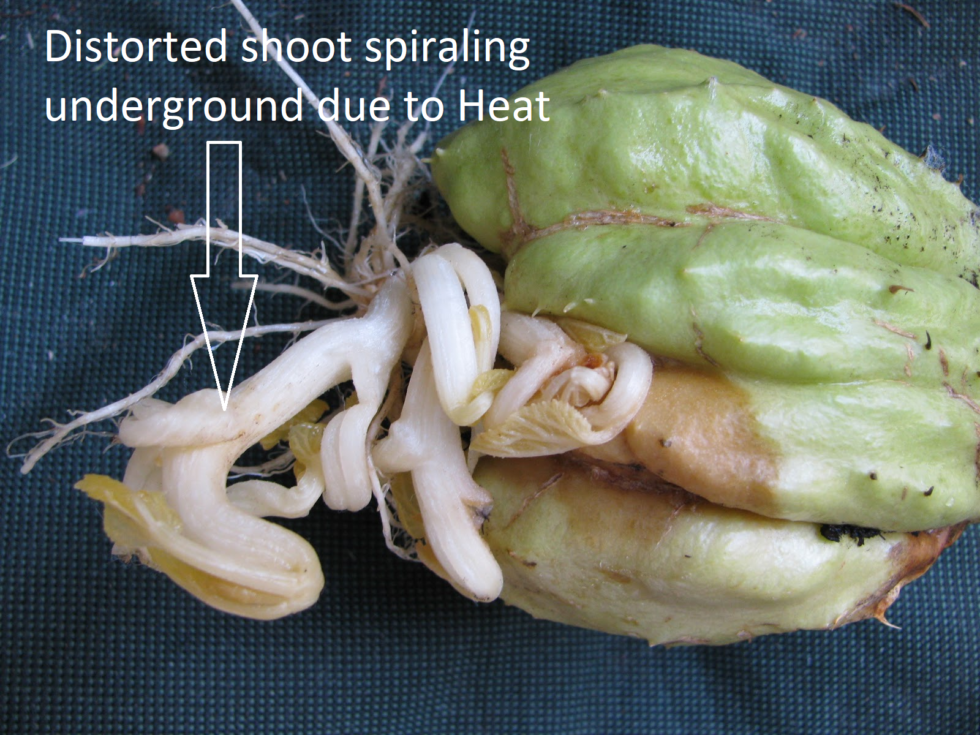
So sprout-planting in May and June should be done as you normally would, but place a milk crate over the planted sprout and cover it with shade cloth. This will protect it from the intense solar heat. The milk crate will also protect the mirlitons from squirrels and other rodents that like tender young fruit.
Once the shoot begins to grow, you can remove the crate and stake the vine.
by Lance Hill | Apr 20, 2012 | Mirliton
Because of the warm winter, we have been getting an early crop of mirlitons that started in February. I noticed these gelatinous clear growths on the immature fruit and then spotted an immature and mature leaf footed bug (stink bug) that feed on the fruit.
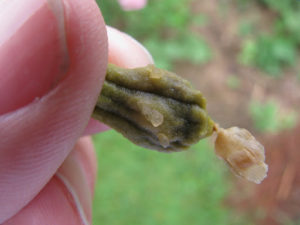
Fruit fluids (cytoplasm) leaking from fruit and jelling. Note flower and fruit are dead
Dr. Dale Pollet of LSU identified these growths as the cytoplasm (fruit fluids) oozing from the fruit after the leaf footed bugs have penetrated the fruit skin to feed on it. In this case, attacking the very small immature fruit kills the fruit. I have seen the insect also try to feed on mature fruit which does not display any immediate damage but will manifest as brown bruising after the fruit is picked. They also spread plant diseases. The best method of control is to pick the insects off by hand, but they can be treated with organic fungicides. If you use an organic pesticide, be careful that it is not toxic to bees (it is pollination season) and that it is not phytotoxic (can damage leaves in high temperatures). Test it on a few leaves for one week first.
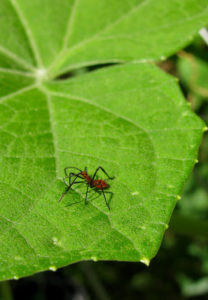
69
Immature Leaf footed Bug on Mirliton Leaf
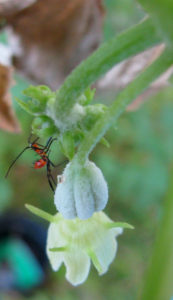
Leaf footed bug feeding on flowers. They can block pollination tubes.
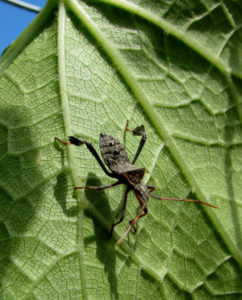
Mature Leaf Footed Bug (stink bug)
Lance Hill
Mirliton.org
Lance@mirliton.org







Recent Comments